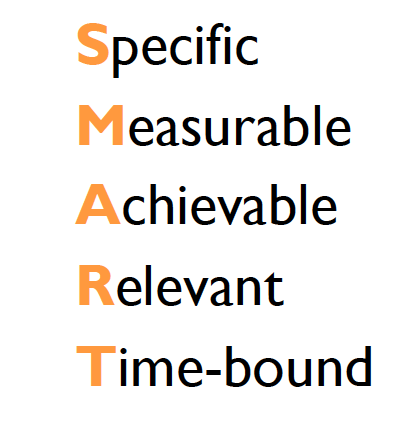NUTR 400 3.1 Energy Balance
1/23
There's no tags or description
Looks like no tags are added yet.
Name | Mastery | Learn | Test | Matching | Spaced |
|---|
No study sessions yet.
24 Terms
what is energy? How do we get it? When is it relased?
the capacity to do work
obtained via kcals we get from fats'/carbs/proteins/alch
released by the chem reaction of metabolism
Three types of energy balance?
Negative energy balance- eating less than needed
Energy balance- eating the correct amount
Positive energy balance- earring more than needed
what cues us to eat?
hunger- regulated in the body, biological impulse to seek energy
appetite- regulated outside the body, wanting food without being hungry. affected by food environment
ghrelin (short term systems)
makes us hungry!
Released by the stomach, signals the brain to be hungry
When there are low amounts of food/energy in the stomach it signals!
(leptin) long term systems
adjusts food intake/energy expenditure
maintains adequate fat stores
note that it’s important to have some extra energy
mediated by leptin! Makes the brain less hungry- suppresses hunger
leptin is produced in the adipose tissue
components of energy expenditure (3 parts)
Total energy expenditure = TEE
Basal Metabolic Rate = (BMR) 60%
Thermic Energy Affect of Food = (TEF) 10%
Active Energy Expenditure = (AEE) 10%
Basal metabolic rate (BMR)
Your metabolism!
energy required to maintain essential function that sustain life- the cost of living
chem reactions, maintenance of muscle tone, organ function, active transport, etc
Largest component of TEE (60%)
Measured by indirect calorimetry (medgem)
Factors that affect your BMR
#1- the amount of fat free mass you have, aka muscle
The more you have the higher your BMR
Others: Age, sex, growth, hormones, starvation, illness, pregggo, ethnicity (whites have higher BMR), caffeine sleep, smoking
Fat free mass and BMR
FFM = total body mass - fat mass
is is your muscle
the greater the FFM the greater the BMR
skeletal muscle is more active than adipose tissue (fat)
Woman will have a lower BMR since they need more fat
Both decline with age
Measured by an electrical current, body comp test
Thermic Effect of Food (TEE)
The energy needed to digest/absorb/metabolize the nutrients in food
protein requires the most! then carbs followed by fat
does not vary between peeps, 10% is the rule of thumb
Active Energy Expenditure (AEE)
amount of energy expended in physical activity per day
includes exercise and day to day movement, contractions of skeletal muscles to move and maintain posture
MOST VARIABLE COMPONENT OF TEE, but roughly 30%
Non-exerise activity thermogenesis (NEAT)
The non essential movement of energy day living
contributes to AEE
maintains posture and spontaneous movement
Growth of adipose tissue
during weight gain, they increase in size and number
once a cell is made it can never go away, just shrink!
this makes weight loss hard
Body fat distribution
We all store our adipose cells in different places!
Gynoid- pear shape, resists weight loss, more common in woman
android- apple shape, inc risk of cardiovascular disease, since the fat is in the middle of you which disrupts ones organs
Obesity, low-grade inflammation, and chronic disease
enlarged adipose cells produce excess hormones- they are messengers!
This causes low grade inflammation in the body; helping to cause chronic disease!
such as fatty liver, heart disease, inc risk of cancer, stroke, HTN, etc…
Excess weight in the US
Obesity is on the rise!
Developing obesity
Major causes:
Inc intake of Kcals and dec physical activity (Energy imbalance)
Other causes:
genetics
individual behaviors
environmental factors, things like sleep that dec BMR
Body mass index (BMI)
An indirect anthropometric measurement of body fat, based of of height and weight
< 18.5 = underweight- risk
18.5 - 24.9 = healthy- low risk
25 - 29.9 = overweight- slight risk
30+ = obesity- risk
LIMITATION- BMI does not consider body comp, like an athlete!

Weight bias
Negative attitudes/beliefs/assumptions towards overweight people
emerages prior 3 years of age
#2 source of bias in the US- race is #1
negative impact on fat people, medical care, health, social interactions, jobs, etc
Yo-yo dieting
bad!
the tendency to gain weight over time, lowers metabolism, nutrient deficiencies, ED’s
Chronic dieting
self critical/distorted body image, preoccupation with food, social isolation, weight cycling nutrient deficiency lower metabolic rate
your BMR lowers as you do this, making it harder to loose weight after these fat diets
Fat diets
made to fail!
temporary solutions
money makers for companies
not long term
not enough nutrients/kcals, causes ED’s
Healthy weight loss
healthy rate is 1-2lbs a week
life style change- physical activity, nutritious eating, sustainable behavior change
S M A R T goals!

Nutritional considerations of healthy weight loss
develop a kind relationship with food- there are no “good” or “bad” foods
focus on moderation and portion size
eat regularly throughout the day
nutrient dense foods
non-startchy veggies, whole grains, fruit, lean protein
set small realistic SMART goals